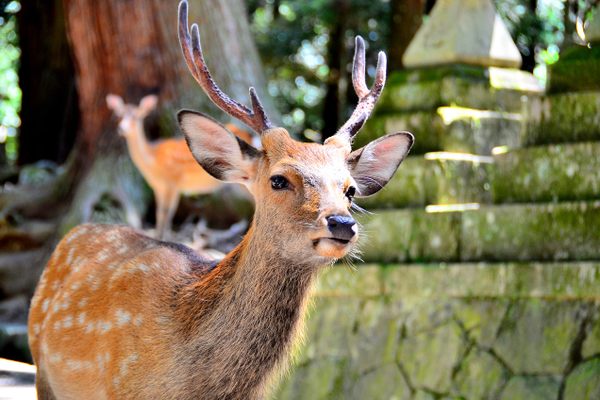Rats Can Trade Favors
The wildly social rodents will work for snacks.

Brown rats, the ubiquitous Rattus norvegicus, are social creatures: The rodents tend to troop around in packs and live in colonies, which are organized in loose social hierarchies. Like human siblings, muroids play around, tussling, chasing, and scrabbling—and their fun sometimes takes a dip into squabbling. They help each other preen their fur and huddle up for warmth.
They also seem to do each other favors and cash in on IOUs, according to new research published in the journal Current Biology.
In a controlled study, researchers created a system of needs and potential payoffs. They dripped saltwater onto rats’ necks—just out of their reach. If they were going to clean it off, they’d need to enlist some help from their furry brethren. The rats were able to nudge food toward each other, and the researchers noted that rats were more likely to feed their neighbors that had groomed them. The rats with full bellies were, in turn, more likely to groom the rats that had furnished their snacks. “We found the rats traded these two services among each other according to the decision rules of direct reciprocity, e.g. ‘I help you because you helped me,’” said Manon Schweinfurth, a coauthor and researcher at the University of St Andrews, in a statement.

Creatures cooperate to accomplish all sorts of things, with seemingly varying degrees of social awareness. Thousands of bees—workers, drones, and the queen—collaborate to keep a hive thriving. Some other species appear to wrestle with more abstract notions of sharing and reciprocity. Primates, in particular, have a knack for remembering each others’ neighborly acts and returning the favor. In the 1982 book Chimpanzee Politics: Power and Sex Among Apes, the biologist Frans de Waal notes that chimps establish reciprocal relationships hinging on grooming and food: If Ape A grooms Ape B, Ape B will later dole out more food to Ape A than to any other chimps hankering for a snack. Chimps also seem to keep a running tally of past kindnesses. In 2014, a resplendently plumed grey parrot named Griffin caught on to similar notions, suggesting to researchers writing in the journal Animal Cognition that these behaviors could also play out in the avian world.
Schweinfurth and company count this new research as further evidence that social behaviors aren’t limited to the creatures with the biggest brains and well-understood cognition. “This result indicates that reciprocal trading among non-human animals may be much more widespread than currently assumed,” Schweinfurth said.






















Follow us on Twitter to get the latest on the world's hidden wonders.
Like us on Facebook to get the latest on the world's hidden wonders.
Follow us on Twitter Like us on Facebook